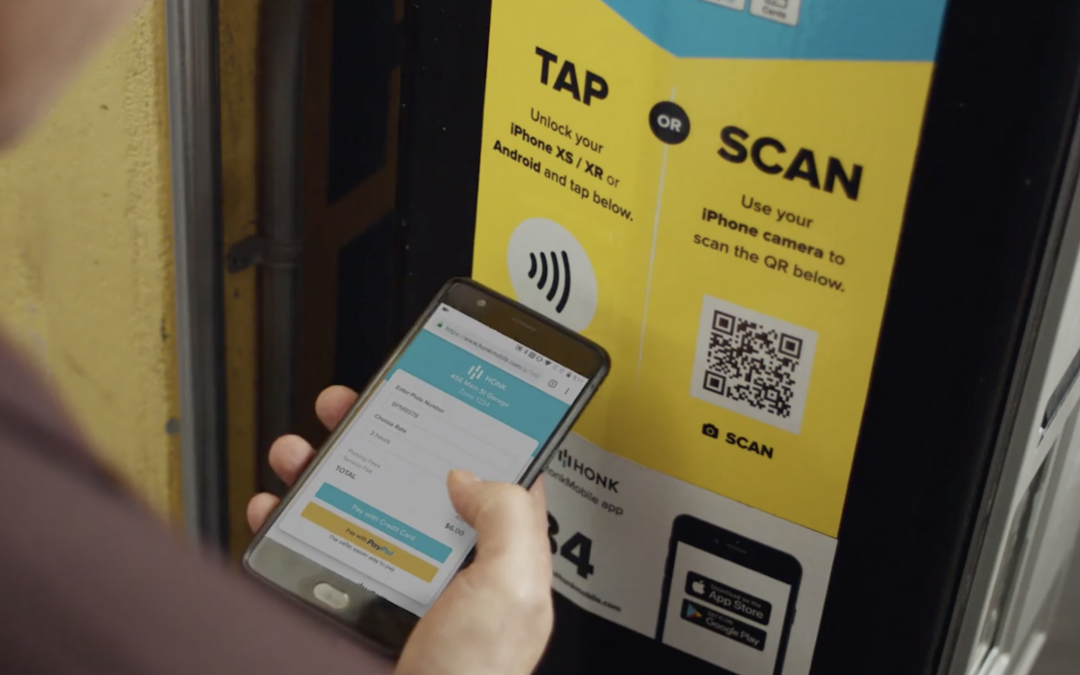By Michael Back
Contactless infrastructure has been in place for years but until now, consumers have not embraced this technology on a broad scale. As a result, parking operations have offered it inconsistently across the board. The tides are changing – but will it be a tsunami?
The climate around coronavirus has drawn particularly close attention to the cleanliness and safety associated with both cash and the high-touch payment technology that we use every day — from ATMs to retail pin pads to parking infrastructure. The new consumer hypersensitivity around previously simple conveniences of modern-day life will need to be re-examined post COVID-19.
Let’s start by considering just how unhygienic — and as a direct result — unsafe cash and high-touch payment technology happens to be:
We have known for years that banknotes harbour the perfect environment for microbes to settle. Past studies have shown that bills carry more than 3,000 types of bacteria including E. coli, Salmonella, and Staphylococcus aureus. But as the world comes together to stop the spread of COVID-19, what’s new is that governments are starting to undertake strong measures to alleviate coronavirus transmission via cash handling — China is disinfecting and locking away used banknotes, while the Bank of Korea is heating banknotes, and in some cases, burning the bills. In addition, the Bank of Korea will no longer handle the exchange of coins and banknotes that have been introduced from abroad.
Another powerful recommendation in the move away from cash comes from the World Health Organization, which has urged the population to avoid cash and to use contactless payments to reduce the risk of transmission of COVID-19. In an April 2020 study, The Lancet Microbe looked at how long the coronavirus lasts on various surfaces. Among their discoveries was that the virus can stay on plastic and steel – the very same materials used to make up parking payment infrastructure – for up to 7 days.
While the current coronavirus outbreak won’t last forever, we can expect that many of the new, and sanitary, habits developed during this time will remain – not only to prevent additional coronavirus waves, but to avoid newer microbes from infecting our population. It is safe to assume the global disdain for cash-based sales and the avoidance of high-touch areas will have a lasting impact on consumer purchasing behaviours and spending habits going forward. How will this shift impact the parking industry in a post COVID-19 world?
Let’s take a look…
Pre-pandemic parking infrastructure revolved heavily around high-touch pay stations and parking meters for the acceptance of cash, credit card and electronic payments. Contactless payments (think: mobile apps and standalone tap-to-pay) have been largely regarded as “premium” products. The mentality that contactless technology was a nice-to-have, but not a necessity prevailed. As a result, it has not been ubiquitously accepted or made available to consumers and in many cases, users were and are charged additional fees for this ‘convenience’.
Post-pandemic, everyday life will be forever changed. Experts are telling us that the virus won’t suddenly disappear, nor will there be a complete return back to “normal” life. Instead, restrictions will gradually be eased and society will slowly start to re-open. Everyday habits and processes will need to be re-examined, and companies must quickly adapt. Will consumers feel comfortable interacting with high-touch public surfaces? Will valet parking become a thing of the past? Will parking finally go cashless? While the answers to these questions remain to be seen, what we do know is that parking operators must begin preparations now for a brave new world of parkers — one that limits shared interaction and demands safe, hygienic forms of payment.
Mobile apps for parking payments will no doubt see a huge surge in downloads and usage. The safety and ease of paying for parking from one’s own mobile device is no longer a luxury — it is a necessity for safety-conscious consumers. Parking operators must acknowledge that mobile apps are no longer a premium product, and the parking meter with its high-touch surfaces, paper-based receipts and high-cost maintenance is a thing of the past. With this realization, we should see a change in the fee structure for apps. Will more operators begin to absorb the convenience fee to provide this essential service to customers? Only time will tell.
Parking operators will also need a holistic approach for safe parking payments, one that offers drivers a variety of options — and not simply a “one and done” product. As seen by the numbers – about 38% of consumers now see contactless as a basic need when it comes to payments – contactless payments will become the new norm for all payments. Parking operators need to include this form of payment as an option for parkers if they want to meet consumers’ needs and reach the highest level of compliance.
Just one year ago, Honk developed a patent pending contactless technology that does just this. It’s called HonkTAP, and it allows drivers to literally tap their phone to initiate payment. No app to download, no pay station to touch. Drivers simply — and safely — tap to pay for their parking spot, using a smart station with near field communication (NFC) technology. This type of technology is a necessity in the post COVID-19 world.
Planning ahead for a contactless strategy that works with parking operations now is of utmost importance. As restrictions start to ease, and the “new-normal” begins, consumers will continue to have both safety and cleanliness as top-of-mind when making a purchase. Are your parking operations prepared for the new-normal?
While these uncertain times are rocking every industry, there’s good news for the parking industry: The answer is — and has always been — in the palm of our hands.
About the Author: Michael Back, Founder & CEO of HonkMobile is a seasoned entrepreneur with 20 yrs experience in electronic payments.

